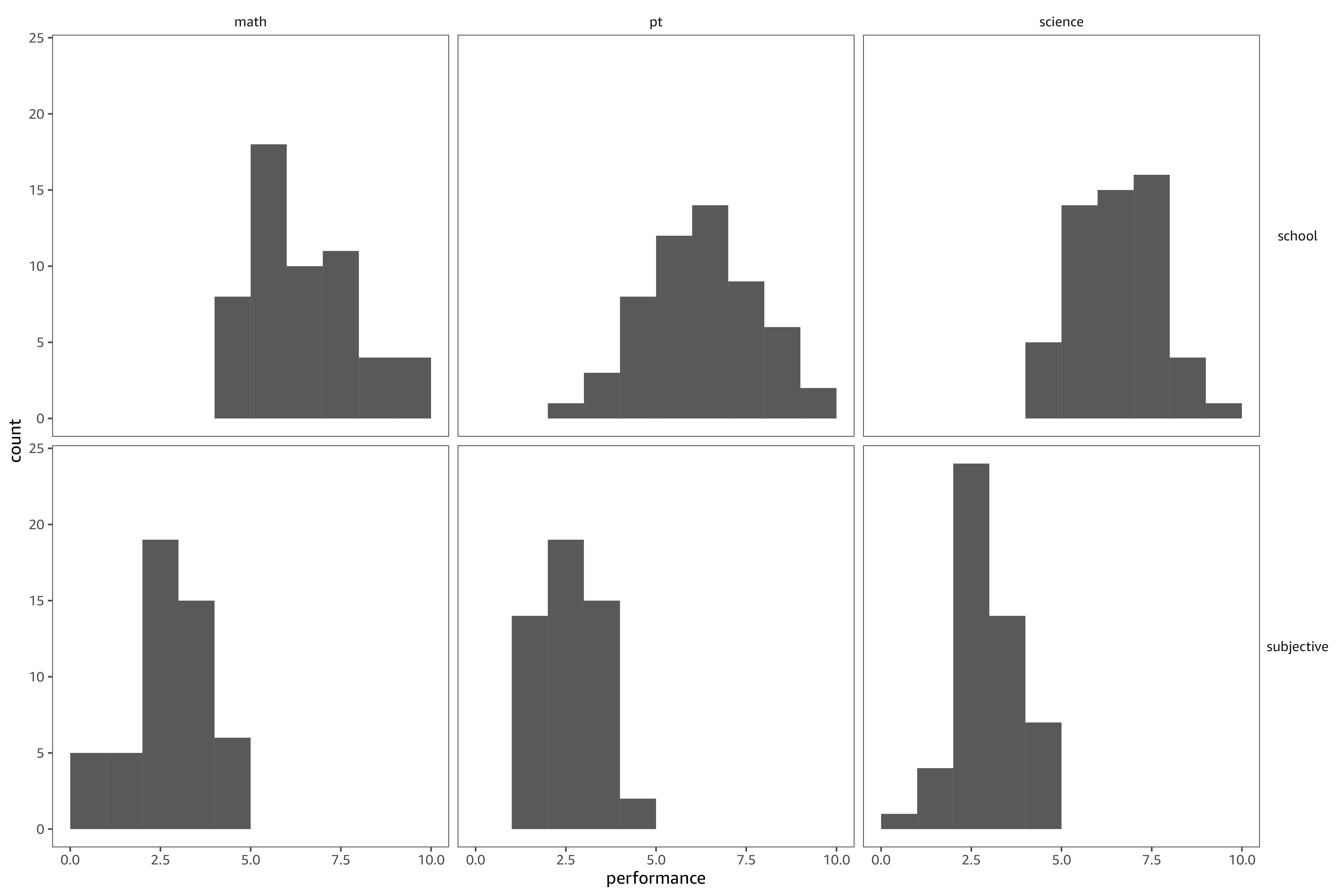I'am modelling the effect of individuals' chronotype on their respective school performance. So, my dataframe consist of the subjective and school declared performance (dependent variable) of middle school students (random variable), and their chronotype (independent variable). The students' subjective performance was measured on a scale from 1 to 5, while the school declared performance was on a scale from 0 to 10. Thus, I Z-standardized these performance values.
#Loading data
data <- read.table("clipboard", header=T)
#Scale function: Z-Score Standardization
data.st <- as.data.frame(scale(data$performance, center = FALSE))
data$performance.st <- data.st$V1
hist(data$performance.st, prob=TRUE, ylim=c(0,1),
main = "Histogram", col= "lightblue")
shapiro.test(data$performance.st)
#W = 0.96497, p-value = 6.798e-07
Then I modelled my data considering a poisson family:
# Poisson distribution
glmer.poisson <- glmer(performance ~ chronotype + (1|random),
family = poisson(link = log),
data = data)
Generalized linear mixed model fit by maximum likelihood (Laplace Approximation) ['glmerMod']
Family: poisson ( log )
Formula: performance ~ chronotype + (1 | random)
Data: data
AIC BIC logLik deviance df.resid
Inf Inf -Inf Inf 310
Random effects:
Groups Name Std.Dev.
random (Intercept) 1
Number of obs: 315, groups: random, 55
Fixed Effects:
(Intercept) chronotypemm chronotypemv chronotypeve
-0.03279 -0.02495 -0.12318 0.01500
optimizer (Nelder_Mead) convergence code: 0 (OK) ; 29610 optimizer warnings; 1 lme4 warnings
plot(simulateResiduals(glmer.poisson))
However, the GLMM clearly did not fit. And now I have some questions regarding my data and GLMMs.
First: I don't really know which family to use to model my data. Although I have non-integer values, I think poisson is the right family to use (although lognormal distribution provided nice results). Though, what about the warnings returned in the lm4 package saying that my values are non-integer? and the optimizer warnings? should I change my optimizer? if so, how?
Second: A fellow of mine suggested for me to use gamma or negative binomial instead of poisson. Though, after I see the histogram i thought a lognormal distribution would be a nice try. So I modelled accordingly:
#Gamma distribution
gamma <- glmer(performance ~ chronotype + (1|random),
family = Gamma(link="inverse"),
data = data)
qqnorm(resid(gamma), pch=16)
qqline(resid(gamma))
plot(gamma)
# Negative binomal distribution
glmer.nb <- glmer.nb(performance ~ chronotype + (1|random),
data = data, family=MASS::negative.binomial(theta=1.75))
plot(simulateResiduals(glmer.nb))
# The simulated residuals of the glmer.nb were very similar to the poisson model
plot(glmer.nb)
qqnorm(resid(glmer.nb), pch=16)
qqline(resid(glmer.nb))
# lognormal distribution
lognormal <- glmer(formula = log(performance) ~ chronotype + (1|random),
data = data, family=gaussian(link = identity))
plot(simulateResiduals(lognormal))
plot(lognormal)
qqnorm(resid(lognormal), pch=16)
qqline(resid(lognormal))
The lognormal seems to be a good distribution for my data, but I am not sure.
Finally: Suppose that I'am building a GLMM considering a poisson family. Should I standardize my dependent variable even though poisson use a log link function? I think the correct answer is yes since my data have different scales.






subjectbut there is a bigger issue. You standardize the performance scores by computing one variance across the two scales (subjective and school-declared) and the three subjects. This doesn't make sense. For one the means of these six groupings (scale x subject) might be different. $\endgroup$